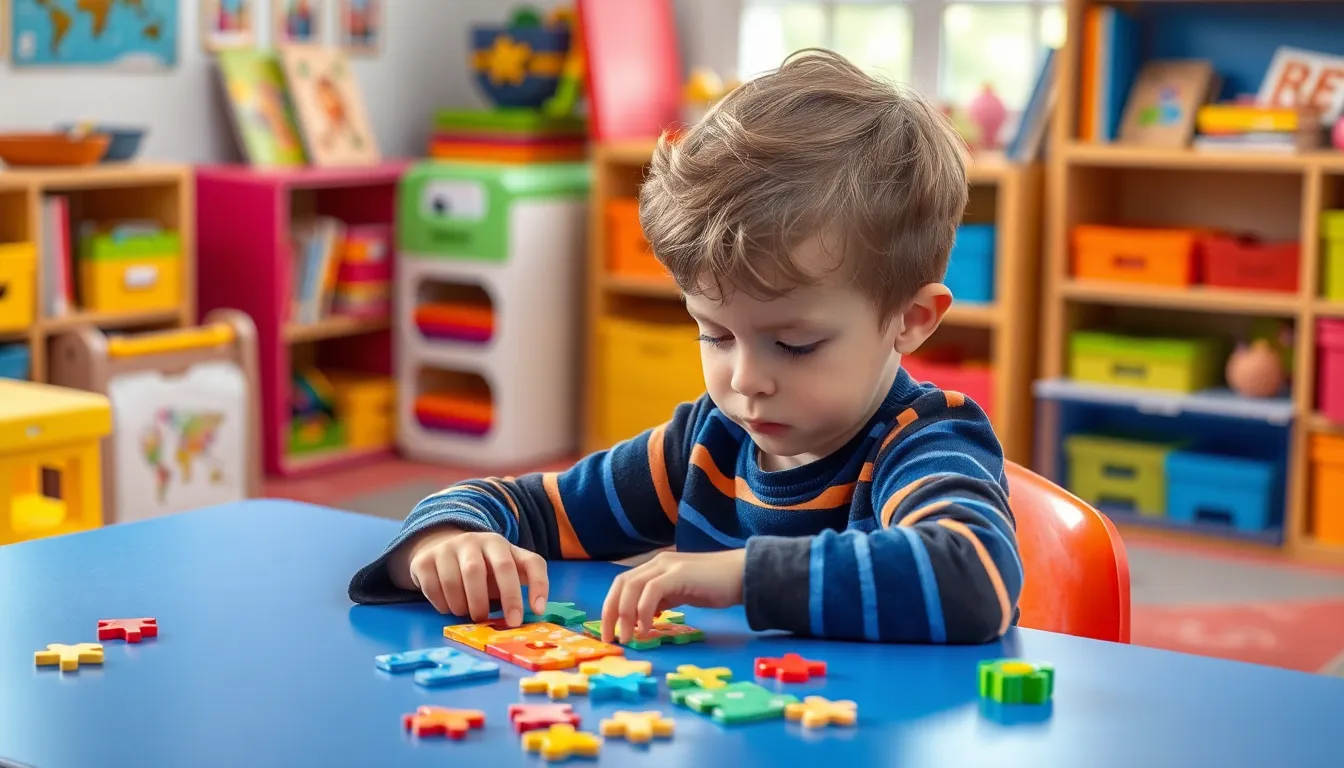Table of Contents
ToggleIn a world where screens dominate attention, the art of reading often takes a backseat. Yet, reading readiness is the secret sauce that transforms children from mere listeners to confident readers. It’s like preparing for a thrilling roller coaster ride; a little anticipation and practice can make all the difference.
Understanding Reading Readiness
Reading readiness refers to the stage at which a child demonstrates the skills necessary for learning to read. This readiness is crucial for building confident readers.
Definition and Importance
Reading readiness encompasses the skills, knowledge, and attitudes children must possess before engaging with text. It includes phonemic awareness, vocabulary development, and comprehension. These foundational skills foster a smooth transition into formal reading instruction. Research shows that children who reach this stage are more likely to succeed in literacy. Language development occurs in various ways through interactions, storytelling, and play. Preparing children effectively enhances their capacity for reading and aids in academic success.
Key Components
Several key components contribute to reading readiness. Phonological awareness enables children to recognize sounds in words. Letter recognition provides familiarity with the alphabet’s characters. Vocabulary knowledge builds a child’s understanding of word meanings. Comprehension skills support the ability to interpret and understand text. Additionally, motivation to read drives engagement. Each component plays an essential role in creating an environment conducive to learning. Joint reading experiences with caregivers enhance these components, making the journey toward reading enjoyable and effective.
Factors Influencing Reading Readiness

Numerous factors contribute to a child’s reading readiness. Understanding these elements helps in fostering essential skills effectively.
Cognitive Development
Cognitive development significantly impacts reading readiness. Children who engage in activities promoting critical thinking show improved reading skills. Skills such as memory and problem-solving allow for better navigation of text and comprehension. Studies indicate that children who play with puzzles or engage in memory games often excel when transitioning into reading. Visual-spatial skills developed through these activities support letter and word recognition. Thus, a strong cognitive foundation is crucial for successful reading experiences.
Language Skills
Language skills form the backbone of reading readiness. Children with rich vocabulary are more equipped to understand complex texts. Strong language experiences, including conversations and storytelling, contribute to vocabulary growth. Specialized instruction that focuses on phonics and phonemic awareness enhances children’s ability to decode words. However, exposure to diverse language experiences before formal schooling leads to greater proficiency in reading. Emphasizing interactive reading sessions further strengthens these skills for effective learning.
Social and Emotional Readiness
Social and emotional readiness plays a pivotal role in a child’s readiness for reading. Children who feel secure and confident in their learning environment are more likely to embrace reading. Peer interactions through group activities foster a love for books and reading. Supportive relationships with caregivers contribute to positive attitudes toward learning. When children view reading as a collaborative and enjoyable experience, it encourages persistence and motivation. Emotional resilience allows them to navigate challenges encountered during reading.
Assessing Reading Readiness
Assessing reading readiness involves identifying children’s skills and knowledge prerequisites for successful reading. Effective methods yield insights into their preparedness.
Evaluation Methods
Observational assessments provide direct insight into children’s behavior during reading activities. Structured assessments, such as checklists, help identify specific skills like phonemic awareness and comprehension. Standardized tests evaluate numerically defined competencies, highlighting both strengths and areas needing improvement. Performance assessments, which involve children engaging in reading tasks, reveal practical reading abilities. Finally, informal assessments, such as discussions during joint reading experiences, capture valuable qualitative data on children’s understanding and engagement.
Tools and Resources
Numerous tools assist in assessing reading readiness effectively. Phonological awareness assessments gauge children’s ability to recognize sounds in words, laying a foundation for reading. Letter recognition tools measure children’s knowledge of letter shapes and sounds. Vocabulary assessments identify word usage and comprehension levels, providing insights into language development. Various resources, including children’s books and digital applications, offer engaging ways for parents and educators to conduct assessments. Professional development courses help teachers refine their skills in assessing reading readiness, ensuring they effectively support children’s literacy journeys.
Strategies to Enhance Reading Readiness
Creating an environment that fosters reading readiness requires intentional strategies at home and in the classroom. Both settings play a crucial role in children’s literacy development.
Home Activities
Engaging children in daily reading activities cultivates reading readiness. Shared reading sessions, where parents read aloud, enhance vocabulary and comprehension. Storytime can include asking open-ended questions that prompt discussion about the narrative. Incorporating educational games focusing on phonics and word recognition reinforces letter-sound relationships. Parents should also encourage pointing out letters and words during everyday activities, like shopping or cooking. Simple activities, such as creating a reading nook, promote a love for books. Introducing rhyming songs and nursery rhymes supports phonemic awareness. Setting aside dedicated reading time each day helps develop a routine around literacy.
Classroom Approaches
Classrooms can adopt various methods to enhance students’ reading readiness. Implementing interactive read-aloud sessions encourages participation and engagement. Using visuals and props can make stories more relatable and exciting. Teachers can utilize phonics programs that emphasize letter recognition and sound association. Incorporating group activities, such as story mapping, promotes collaborative learning experiences. Students can benefit from technology tools that align with reading goals, providing personalized practice. Creating a literacy-rich environment with accessible books enhances motivation. Encouraging peer reading with buddies fosters a supportive learning community. Classroom incentives for reading milestones can inspire children to reach their reading goals.
Fostering reading readiness is a crucial step in a child’s literacy journey. By nurturing essential skills and creating a supportive environment, parents and educators can significantly impact a child’s confidence and success in reading. Engaging in shared reading experiences and implementing effective strategies at home and in the classroom lays the groundwork for a lifelong love of reading.
As children become ready to tackle texts, they not only enhance their academic performance but also develop critical thinking and communication skills. Investing in reading readiness today ensures a brighter future for young learners, empowering them to navigate the world of literature with enthusiasm and ease.







